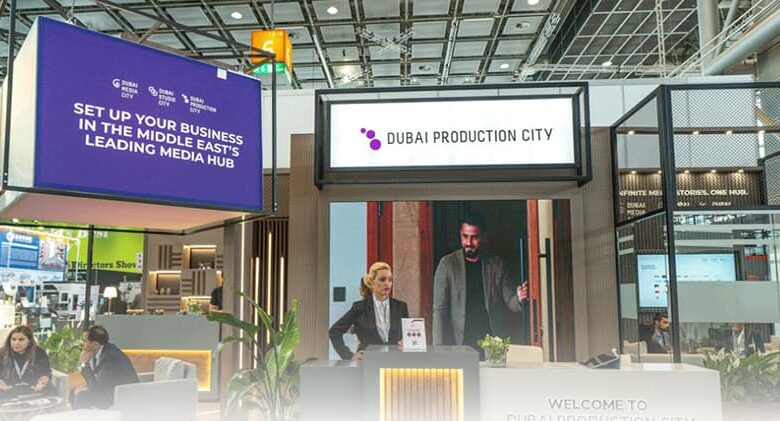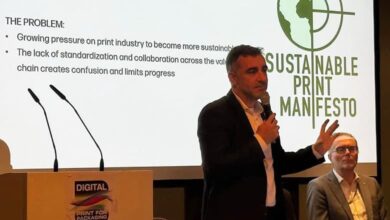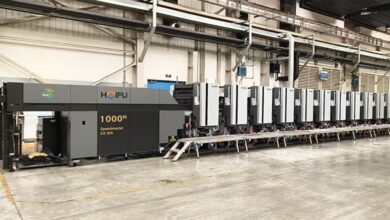
Dubai Production City, the Middle East’s leading destination dedicated to printing, packaging, and production industry excellence, posted a 13% year-on-year growth in its customer base during the first quarter of 2024. This was announced on the side-lines of drupa, the world’s leading trade fair for the printing and graphics sector that was held from 28 May to 7 June in Düsseldorf, Germany.
Part of TECOM Group, a champion of business excellence that has led Dubai’s economic diversification for 25 years, Dubai Production City is growing amid a surge in global demand for pathways to accelerate the print and production sector and as the UAE’s pro-innovation environment attracts global talent to the country’s business landscape.
Regional address of industry giants
Home to multiple printing presses, Dubai Production City is the regional address of industry giants like document management technology leader Xerox; the UK-headquartered flexographic solutions agency Reproflex3; Dynagraph, a leading provider of innovative print solutions in the Middle East; and NDigitec, a regional leader in the prepress, pre-media, printing, and creative production sector. Additionally, the destination provides pathways to enable and accelerate the convergence of traditional and new media by nurturing an environment conducive to 3D printing, graphic design, and multimedia production specialists.
Digitisation drives print and production industry growth
Led by solid customer demand, Dubai Production City noted solid growth as the global commercial printing market’s size topped $494.5 billion last year, with market research and consulting firm Grand View Research forecasting a CAGR of 3% for each year between 2024 and 2030.
“Digitisation is a driving force for positive disruption in the print and production industry, and we must endeavour to leverage its true potential to secure the sector’s sustainable growth,” says Majed Al Suwaidi, Senior Vice President at TECOM Group Dubai.
“This transformation must be led collectively from all corners of the industry, and strategic leadership, such as the Dubai Economic Agenda ‘D33’ that pioneers globally impactful innovation or the German government’s Future Research and Innovation Strategy are crucial to meet this goal. This edition of drupa was a meeting of minds for global printing innovators as well as a platform to discover how private sector players like Dubai Production City can elevate future-readiness of the industry. The UAE and Germany are both uniquely robust bastions of global innovation, and Dubai Production City brought its future visions closer at this year’s drupa,” adds Al Suwaidi.
Nurturing innovation
The steady pace of technological improvements, ranging from faster presses and new toner processes through to the proliferation of 3D printing, is augmenting the industry’s prospects. Dubai Production City fosters an environment conducive to this rapidly evolving economic segment with a diverse offering that includes purpose-built commercial infrastructure to production industry businesses of all sizes from around the world.
Dubai Production City is part of TECOM Group’s Media Cluster, which alongside Dubai Media City and Dubai Studio City, forms an integrated hub that serves a diverse range of creative industries across the region. With more than 3,500 local, regional, and international customers and over 38,000 creative professionals, the Media Cluster unites global industry leaders with the common goal of elevating the regional media value chain and catalysing an array of content production activities.
A hub of excellence for tomorrow’s media innovators, the Media Cluster co-locates exemplary global talent from CNN, BBC, Reuters, and Discovery networks at Dubai Media City and Dubai Studio City with the international repertoire of production industry experts at Dubai Production City.
Located close to Al Maktoum International Airport, which is set to undergo a massive $35 billion expansion project over the coming decade, Dubai Production City is also home to in5 Media, a vertical of TECOM Group’s start-up incubator in5. By providing access to potential investment opportunities, co-working spaces, and sector-specific facilities, in5 Media consistently nurtures the regional creative talent pool’s entrepreneurial spirit.
Dubai Production City is part of TECOM Group’s portfolio of business districts, which include Dubai Internet City, Dubai Media City, Dubai Knowledge Park, Dubai Outsource City, Dubai Industrial City, Dubai Studio City, Dubai Science Park, Dubai International Academic City, and Dubai Design District (d3).





